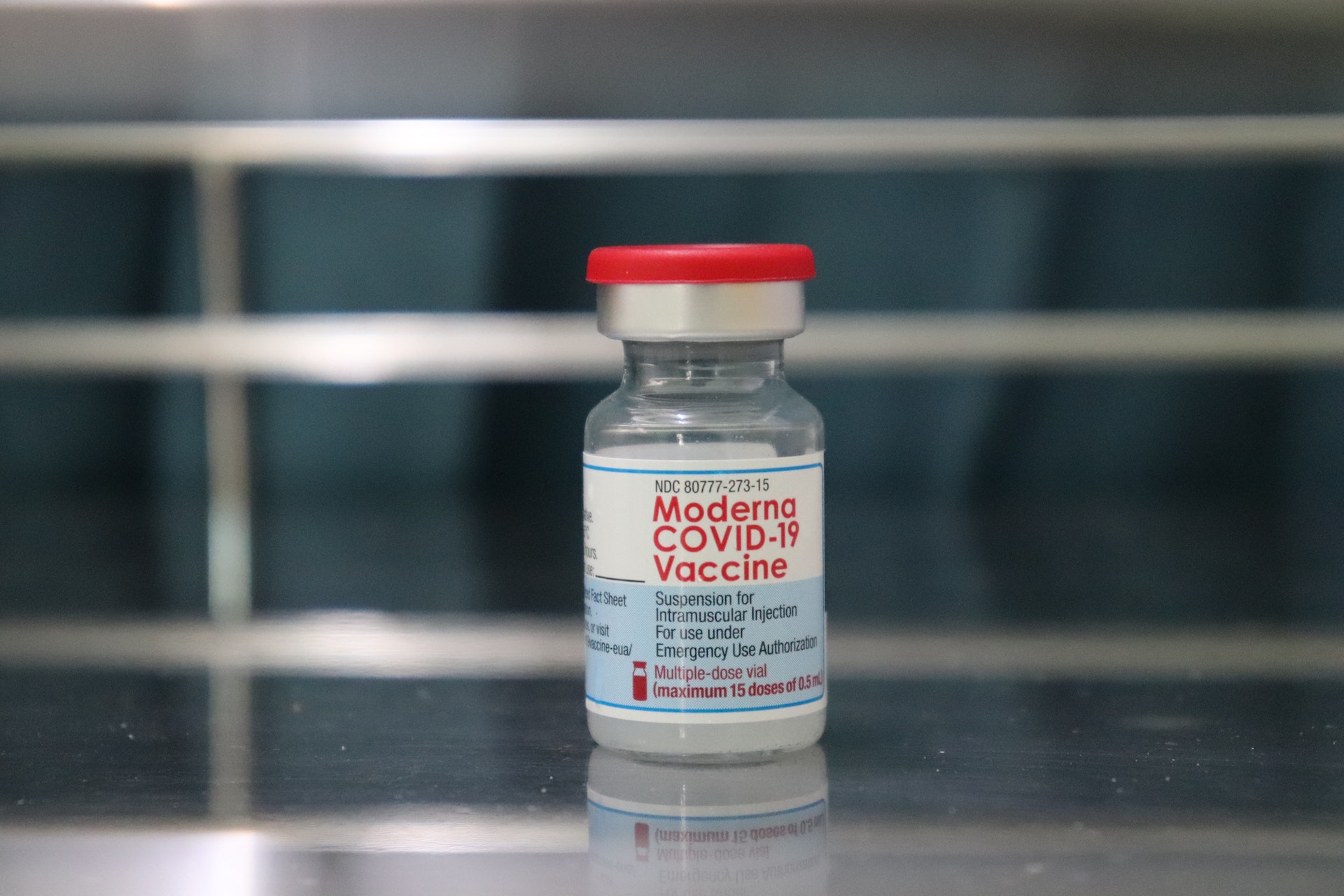Covid-19: Moderna vaccine

Welcome to the COVID-19 update. We wrote about the Pfizer-BioNTech vaccine last time; this time we’re going to talk about the Moderna vaccine. Cases are still going up in the United States, and the daily deaths are increasing in the United States as well.
And in terms of total cases per million population, the top states are North Dakota, South Dakota, and Iowa, so if there ever was a time to get a vaccine out, now is the time. So let’s talk about this new Moderna mRNA vaccine and some of the recent results that have come out.
We wrote about the Pfizer-BioNTech vaccine last time and We are going to just sort of put up some notables about that vaccine so we can compare it to the Moderna vaccine. So one thing that’s notable is that at 25 degrees Fahrenheit, the Moderna vaccine can, last up to one month, but at that same temperature at 25 degrees Fahrenheit, which of course, is below freezing, the Pfizer-BioNTech vaccine lasts for only about five days. However, if you cool the Pfizer-BioNTech vaccine down to negative 94 degrees Fahrenheit, it can actually, be stored for up to six months.
Of course, it’s difficult to get those types of refrigeration units. They are working on that. So the other difference that we see between these two vaccines is whereas the Pfizer-BioNTech vaccine is on day 1 and then another injection on day 22, the Moderna vaccine is on day 1 and it’s a little bit later; it’s actually on day 29. So it’s an additional week and when they asked the participants to let them know after which date they developed symptoms in the Pfizer-BioNTech vaccine, it was seven days after the last injection, whereas in the Moderna, it was 14 days. Now as you’ll recall the Pfizer-BioNTech vaccine results. These were preliminary results that were released by the company and we haven’t gotten the peer review data on this as yet. They said, and they quoted about a 90 percent effectively rate, and recently we also got data being reported by Moderna — again not peer-reviewed, not published as yet — but they are claiming a 94.5 effective rate, and while we haven’t gotten a lot of detailed information from Pfizer-BioNTech, we actually have gotten some granular data from Moderna. Let’s talk about that at this point. So in the study, there were about 30,000 people, and just like In the Pfizer-BioNTech study there was racial diversity to the effect that there were around 11,000 people from communities of color.
In addition to that, there were also 7,000 subjects that were 65 years and older, and there were 5,000 subjects that were less than the age of 65 that had comorbidities, and so what they did is they enrolled 30,000 subjects and, of course, half of these got a placebo and half of these got the one, two injections of the vaccine. And let’s remind people again that this vaccine works in a very similar fashion as does the Pfizer-BioNTech vaccine in that it is an mRNA vaccine, which means that this mRNA, which is encapsulated in lipid the bilayer is injected into the body. It merges with specific cells and the messenger RNA is released into the cytoplasm, not the nucleus, and while it is there in the cytoplasm, it will interact with ribosomes and the mRNA will be translated into proteins and it’s these proteins that are immunogenic and will cause antibodies to form, as well as other diverse immunogenic responses, such as a T cell response, etc.
So when they randomized these 30,000 subjects to either the vaccine or placebo, they did it on day number 1, they did it on day number 29, and they waited the 14 days and then asked them to call in if they had symptoms of COVID-19. Again, we’re looking for the actual disease pattern of COVID-19. It was at that point that they were tested and what they did was they waited for 95 people to become positive for COVID-19. Now, that may sound like a small amount, but remember if the overall infection rate in a population is about one percent, then it’s not unreasonable to believe that in 30,000 people that only about 300 people would actually become infected. So 95 is a good place to do the interim analysis. So at this point when they got the 95 subjects, the data monitoring board unblinded their side to see which patients got the placebo and which ones got the vaccine, so they could make a determination about the efficacy.
This is an independent data monitoring board and, of course, this is not under the control of Moderna.
Well, what they found when they looked at those 95 cases is that, in fact, 90 of those got the placebo and only five of those got the actual vaccine. What is even more interesting, and what we don’t have data from the Pfizer-BioNTech people, is that they actually had no severe cases in their cohort, whereas in the Moderna cohort they did have severe cases, but all 11 of those severe cases were in the placebo group. So this is encouraging news because it seems to show that the Moderna vaccine, number one, is 94.5 percent effective, and I don’t know if that is statistically significantly different than the 90 percent here. So we don’t know that Moderna is necessarily better than the Pfizer-BioNTech in terms of efficacy, but what we do see here is that it seems to be able to prevent severe COVID-19. What we don’t know for either of these vaccines is whether or not these vaccines actually prevent infection of the virus, because here the endpoint was looking at symptoms of COVID-19. It would be interesting to see whether or not this vaccine actually causes sterilization of the infection, and why that would be important is that if, in fact, this vaccine could actually prevent infection with SARS-CoV-2, if it was effective at doing that, then you would see a drop in the transmissibility of this virus. It wouldn’t be able to spread to other people, whereas if there were no effect on infectivity and only an effect on preventing the symptoms or COVID-19, then yes it would drop hospitalizations dramatically, but as we know, the asymptomatic transmission of the virus is a big way that the virus is being transmitted currently, and it would be really interesting to know whether or not this vaccine could actually prevent that, too. So in terms of safety, looking at both the Pfizer-BioNTech and the Moderna vaccine candidates, the data monitoring committee has said that they have not seen any serious safety concerns with the Pfizer-BioNTech candidate, and the data safety monitoring board for Moderna has also said that there were no significant safety concerns. Now with Pfizer, they have said that they’re going to be releasing more specific data on safety in the coming weeks.
Now Moderna has given us a little bit more. Granular data and you should look that up And in looking over the side effects, they were mostly mild to moderate, they were short-lived, and they were the type of side effects that you would expect to see with any kind of vaccine, even a flu vaccine, such as fatigue, myalgias, arthralgias, headache, pain, and redness at the site.
So you can see the differences here very clearly. The similarities are also very clear. Both of these vaccines seem to prevent disease very effectively, however, both are still in question about whether or not they prevent infection. In both, you require two vaccine shots; in both of these vaccines, there seems to be good randomization and also a representation from communities of color. There also seems to be a lack of severe side effects that are concerning, but of course, because they’ve only been around for a few months, we don’t have long-term safety data on either of these vaccines.
And remember we also don’t know how long this type of effect from the vaccine is going to last.
And of course, the other big similarity between these two — the Pfizer-BioNTech and the Moderna — is that they are mRNA vaccines and as it says here on the Moderna website, mRNA is a temporary set of instructions for cells to make a protein, and mRNA is made normally using DNA, but in this case, the vaccine itself contains messenger RNA and that of the course makes the proteins, which are the source of the immunogenic response in the body and causes a number of immune responses, including antibodies. And here is how Moderna depicts its vaccine. As you can see here, the messenger RNA is packaged and there is a five prime region that keeps it from being broken down in the cytoplasm.
And there’s also a three prime region and a poly-A tail here at the end, which also does something similar. Next time we’re going to look at the other two vaccines that are coming up and that includes the one from Johnson & Johnson, and also from AstraZeneca and Oxford, and those are not messengers RNA vaccines, but actually, something rather different, which we’ll take a look at it next time.
Meanwhile, while all this is happening, here on the west coast we’re starting to see stricter rules again being imposed. Once again there is going to be a restriction on indoor dining and also religious meetings inside gyms, etc. There’s also a travel restriction. As you can see here, on Friday, Newsom and the governors of Oregon and Washington issued a travel advisory urging their residents to avoid non-essential travel and to quarantine for two weeks after arriving on the west coast from another state or country. In Oregon, Governor Kate Brown also announced a two-week freeze to limit restaurants to offering only takeout food and close gyms.
She said that the travel advisory would become a requirement if cases remain at current levels. And Washington’s Governor, Jay Inslee, has ordered gyms, bowling alleys, movie theaters, museums, and zoos to shut down indoor operations. the reason for limiting these things, of course, is to reduce the incidence of hospitalizations, which brings us to another interesting article in JAMA network, titled “Outcomes for Out-of-Hospital Cardiac Arrest in the United States During the Coronavirus Disease 2019 Pandemic,” and this was published on November 14, 2020. And essentially, what they found was that during out-of-hospital cardiac arrest, the return of spontaneous circulation in those patients was 18 percent lower overall than before the pandemic. They also found that rates of survival to discharge were 17 percent lower, primarily in communities with moderate to high COVID-19 mortality, and the incidence of out-of-hospital cardiac arrest was higher, but largely in communities with high COVID-19 mortality.
Here you can see the results that were stratified by county-level coronavirus disease in 2019, and in the overall category, you can see here very clearly that there was a 69.7 incidence of out-of-hospital cardiac arrest per 1 million residents in 2020. That went up to 88.5 per 1 million residents, and as you can see here, as the county-level COVID-19 mortality rate increased, so did the difference between 2019 and 2020 for the most part and that was all statistically significant, and the two theories behind this, why this was, in other words, is number one: many people may have been very concerned about going to the hospital because there were a lot of COVID-19 patients there, and therefore their disease manifested itself much further along and therefore it was much more difficult to convert those patients back into a spontaneous rhythm with spontaneous circulation, therefore there was a higher out-of-hospital cardiac arrest incidence, but another theory emerged and is detailed in this article, which we’ll give you the link to, and that is that a number of the protocols that were initially started on these patients when EMS and first responders would go out. They modified it in a way so that there was perhaps less intervention in favor of protecting the first responders more from developing an infection with SARS-CoV-2.
They said in the study, that this raises the possibility of whether protocols that were rapidly put into place following the beginning of the pandemic could have influenced patients’ likelihood of achieving sustained risk or return of spontaneous circulation.
For instance, the U.S Centers for Disease Control and Prevention and the American Heart Association each established interim guidelines for EMS and its professionals during the pandemic, which included screening 9-1-1 calls for the likelihood of COVID-19 infection, limiting the number of EMS personnel during the initial response, causing critical chest compressions during aerosolizing procedures such as intubation, limited bag-mask ventilation when done without specialized filtration, and not transporting patients to hospitals without ROSC, or return of spontaneous circulation.
Many of these recommendations are believed to be essential for protecting front-line health care workers from unnecessary exposure in communities severely affected by the COVID-19 pandemic, but may also decrease the likelihood of successful resuscitation. So I thought this was an interesting article because it shows the collateral damage of a pandemic.
Tell us what your thoughts are below, and thank you for reading. Don’t forget to check us out on Pharmaceuticalbank.com.
There are no results matching your search


